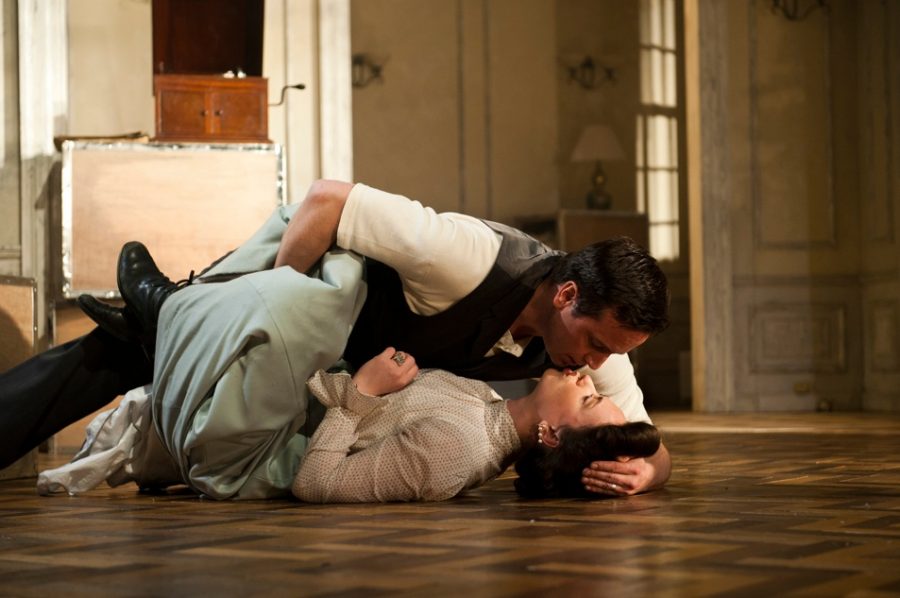Showing @ Royal Lyceum Theatre, Edinburgh until Sat 04 May
When it first opened in 1879, Henrik Ibsen’s play shocked it’s bourgeois audience with it’s depiction of scandal and female emancipation. Much of it’s power was contextual; without the restrictions and moral codes of the time, the finale (one of the most famous in theatre history) would have meant nothing.
It’s in terms of context that The National Theatre of Scotland’s production finds it’s first failing. Zinnie Harris‘ 2009 adaptation translates the key elements of the potentially ruinous scandal from the world of business, to that of politics. Clearly the intention is to make a point about our own era, but in truth, it’s done in such an unsubtle way that it actually detracts from the main focus – the prescribed and infantilised condition of women at this time.
A more serious flaw in this production however is the casting. The reputation of A Doll’s House lies primarily with it’s final scene, where Nora discovers a strength she never knew she had. Amy Manson’s Nora never really feels like she’s lost it and from the beginning seems too resilient to be any man’s plaything. As Kelman, Brian McCardie plays a man who’s possibility for redemption the audience is supposed to cheer, but with not one but two scenes of violence towards a woman, by the time he reaches that point it’s difficult to care. The most consistent performance and the most true to Ibsen’s writing is Hywel Simons as Nora’s husband Thomas, full to brim with self righteousness and pomposity his ultimate fate seems almost inevitable.
Whilst much of the blame for this production’s lack of success can be put down to Harris’ adaptation, director Graham McLaren has to take his share of the blame. Not only in failing to cast or use his actors effectively, but also for the flat uninspired use of Robert Innes Hopkins’ sets. A Doll’s House isn’t the easiest play to stage, but nor is it the most complex. It’s theme’s are strong and it’s characters well drawn. If this production is proof of anything, it is that tinkering for tinkering’s sake is never a good idea.
